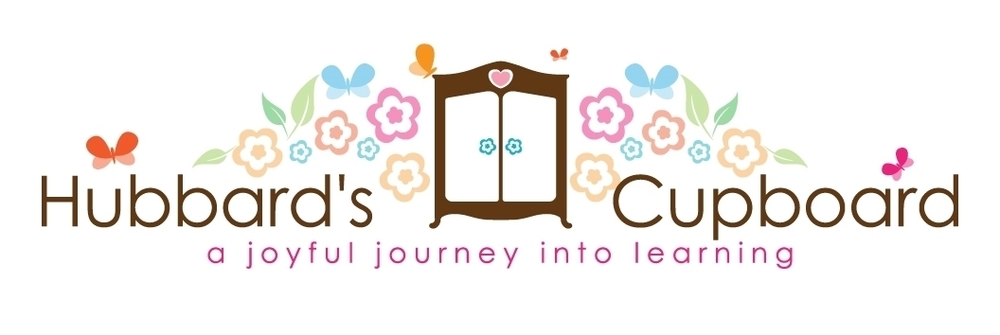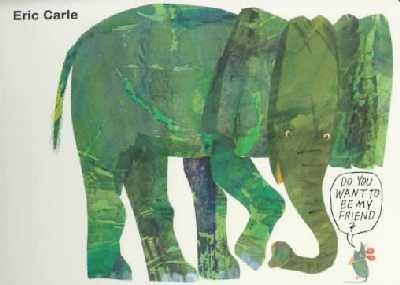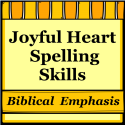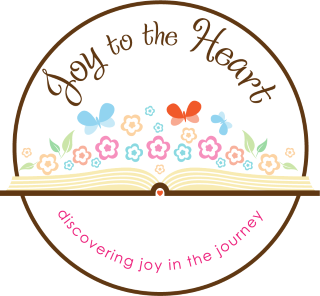Do You Want To Be My Friend?
by Eric Carle
Focus Story: Do You Want to Be My Friend? by Eric Carle
Companion Story: A Cake All For Me by Karen Magnuson Beil
Companion Poem: 'Friends'
Day 1
Prior Knowledge:
Ask students if they have ever tried to become friends with someone new or if someone has ever tried to become their friend. When? How could they tell? What did they do (smile, ask to play, say kind word, share, sit nearby, do nice things, etc.)? How did they feel?
Focus Story:
Introduce the title, author and illustrator of Do You Want to Be My Friend?;Explain to students that in this story, a small lonely mouse becomes brave and asks other animals that he finds if they will be his friend; Take a picture walk, letting students look closely at each picture in order to make predictions about which animal is next in the story, discussing the colors of the animals, what the animals appear to be doing, what each animals' response may be and why, why the little mouse keeps running past each animal, etc.; End the picture walk after the giraffe is introduced and let students make predictions about the ending.; Read aloud for enjoyment and to see if the mouse is finally able to find a good friend. You may wish to incorporate this predictable frame throughout the week so that students can join in…
He saw a (color) tail.
It belonged to a (animal).
"Do you want to be my friend?" asked the mouse.
But the (animal) was too busy and did not seem to hear the mouse at all.
So the mouse ran on…
(You may wish to end today's lesson by singing and moving to the 'Buddy Boogie' by Jordano and Callella-Jones.)
Day 2
Focus Story:
Show students the cover of Do You Want to Be My Friend? and ask them to share what they remember about the story. (Who is the story about? Where does the story take place? What happens in the story? How does the story end?); Reread- Shared Reading (pause, letting students say the colors , the animals, and the question 'Do you want to be my friend?')
Companion Story: Tell students that you have another story about friends to share with them;
Prior Knowledge:
Before sharing A Cake All For Me, show students a sack full of items such as flour, milk, vanilla, salt, chocolate chips, etc. (all of the ingredients that are mentioned in the companion story). Pass around each item for students to see and touch, encouraging students to share what each item is called and how they know. You may want to ask such questions as…
- Have you ever seen an item like this before? Where?
- What is the item called?
- How do you know that this is (food item)? (shape and color of box, letters, etc.)
- What can we do with all of these items?
Introduce title, author, and illustrator; Take a picture walk letting students orally describe what the pig is doing and the ingredients she is using. Stop the picture walk when the other animals enter the story. Let students discuss what the animals may be saying and predict what might happen next; Read the story aloud.; Ask students to share what they would have done and why. Also, ask them to consider if they would want the pig to be their friend. Why or why not?
(You may wish to bake Piggy's Polka-Dot Cake with the class later in the day or share a cake that you have pre-made in order to model sharing.)
Day 3
Focus Story:
Act out the story! Give each student a two-sided picture card. (I had an old copy of the focus story, tore out the pages, and laminated them - perfect!) Each card contains an animal on one side and his tail on the other side. Let students arrange themselves so that they are in the same order as the animals in the story. To begin, have the students show the side containing the tail only. As each animal is mentioned, students turn their cards over so that the animal can be shown.
After the teacher introduces the story, all children get to participate…
Teacher and all students: He saw a (color) tail.
Animal character: It belonged to a (animal).
Mouse: Do you want to be my friend?
Teacher: But the (animal) was too busy and did not seem to hear the mouse at all
Teacher and all students: So the mouse ran on…
Companion Story:
Reread A Cake All For Me.; Reread the story, pausing for students to supply the rhyming words on each page.; Brainstorm additional ways that we can share with others.
Companion Poem and Predictable Chart:
Reread the poem 'Friends' (from our daily opening activities) using echo reading.;
Friends
by Jill Eggleston
Friends share.
Friends care.
We need friends
everywhere!
Tell students that they will each be given a turn to draw a friend's name from a basket. They will then need to use that friend's name to complete the predictable sentence, " (Name of student) is my friend." Let the 'friend' orally spell his or her name as you write it. Write each sentence on chart paper, writing the 'drawer's' name at the end of the sentence in parenthesis. Reread each sentence tracking the print.
Day 4
Focus Story:
Reread – Shared Reading (pause, letting students say the colors , the animals, and the question 'Do you want to be my friend?'); Show students pictures of the animals from the story. (I found some great pictures in The Good Apple Book of Reproducible Patterns: A Colossal Collection of Captivating Images for Classroom Useby Nancy McClure, Good Apple: 1991 and The All Purpose Pattern Book by T. St. Clair, T.S. Denison and Company:1988.)
Choose a few of the following activities to do with your students…
- Sort the pictures by the color of the animals.
- Sort the pictures by the size of the animals (small, medium, large).
- Sort the pictures by where the animals might be seen (farm, forest, zoo).
- Sort the pictures by beginning sounds. For example, place all of the animals whose name begins with /m/ in one pile and all of the others in another pile.
- Say the name of just two animals. Ask students to listen carefully and determine which animal name is longer. Turn the cards over and check by counting the number of letters in each animal name and/or clap the number of syllables.
Companion Story: Reread- Shared Reading (with students supplying the rhyming words).
Predictable Chart:
Complete the writing of the predictable chart, similar to yesterday. Reread each sentence tracking the print.
Day 5
Focus and Companion Stories:
Reread Do You Want to Be My Friend? and A Cake All For Me! (shared reading).; Review these two stories as well as any other stories about friendship that have been read. Have students share what they have learned about being a friend. Ask students to think about their new friends. Let them share what they think makes a good friend and complete this sentence, "A friend ______." Make a list of students' responses.
Companion Poem: Reread 'Friends' together.
Predictable Chart:
Have each child reread his/her sentence, tracking the print. Cut apart one sentence and let students 'Be the Words' and organize themselves into the correct order. Read together. Model how to place each word in the correct order at the top of the page. Then, let each child arrange their words to form their sentence. After their sentence has been checked, let students glue the words at the top of their friend's photo page. Bind all of the pages together in order to make a 'Friends' class book. This can be a traveling class book and/or a book to keep in the classroom to enjoy throughout the year!
Possible Cross Curricular Connections:
Literacy:
- Give each child a puzzle piece with their name on the back side and work together to construct a 'Friends Name Puzzle.'
- Play 'Friends Memory' either by matching identical photos of classmates or by matching photos and names of classmates.
- Begin daily name activities from Building Blocks.
- Compare books with words and books without words.
- Pair students up and have them complete 'My Name/Your Name' sorts. Students are given the letters in their name and asked to sort each letter by whether it is in their name only, in their friends name only, or in both of their names.
Math:
1. Sort classmates into different categories (colors wearing, pets, gender, etc.).
2. While discussing ways to share, learn about halves and sharing equally between two friends.
3. Play 'Number Walk' in which students stand on a numeral that is on the floor around a circle. Students walk, hop, etc. around the circle while the music is playing. When the music stops, the teacher calls out a numeral and all students point and call out the name of their friend who is standing on that numeral. ('Number Walk' is adapted from Math in Motion by Franco and Dauler, Creative Teaching Press: 2000.).
4. After reading Every Buddy Counts, make a class counting book with the same title. Take photos of the students and label the pictures as 1 buddy, 2 buddies, 3 buddies, etc.
5. On child cutouts, write the numerals 1-10 and ask students to arrange them in order.
Science:
1. Group students into partners and have them work with mirrors, half pictures, and real objects. Have students use the mirrors with the half pictures in order to determine what the entire object would look like and to pair up the half picture with the real object.
2. Set pairs of students together with a mirror. Have them look carefully at one another and talk about how they are alike. After a short time, come together as a class and share what they found to be the same. Show students a large cut out of a child and label the parts that are the same for all of the friends in our class.
Health:
Although it is good to share, discuss with children items that should never be shared because it is not healthy. Show a variety of objects (toothbrush, ball, hat, fork, crayon, cup, glue, comb, toy, straw, etc.) and ask students to help you sort the items by whether they would or would not be healthy to share. (from Learning and Caring About Ourselvesby Gayle Bittinger, Warren Publishing House: 1992)
Social Studies-
- Learn about using good manners and polite words.
- Study and practice friendly character traits.
- Learn how what we say and do can affect other's feelings.
- Act out how we express different feelings.
- Share good deeds that we see classmates doing.
- Make and use 'Miss Bee Polite' stick puppets to indicate how they would feel about certain behaviors that the teacher describes. (adapted from Provider's Place)
- Role-play situations for students to practice making friendly choices.
Music/Movement-
1. Sing and move to the 'Friends Sound March', 'Buddy Boogie', and 'I Have a New Friend'(from Fall Phonemic Awareness Songs and Rhymes by Jordano and Callella–Jones, Creative Teaching Press: 1998).
2. Pair students and have them mirror each other's actions.
3. Play 'Movement Telephone' in which all children are in a line facing away from the teacher. The teacher taps one student and makes a movement that only he/she can see. That student taps the next child and mirrors or repeats the movement. The last child in line shows the movement to the entire class and compares it with the teacher's original movement.
Cooking:
Have each child bring in a piece of fruit and work together to make a friendship fruit salad!
Art:
1. Create a friendship quilt with each child's name, photo, and self portrait (use mirrors).
2. Let each student choose one animal from Do You Want to Be My Friend? and create an animal mask to use to reenact the story. (Below are simple outlines that I made that you may print for your class to use as tracers, etc. They are all in PDF format.)
elephant , mouse , horse , alligator , lion , hippopotamus , seal , monkey , peacock , fox , kangaroo , giraffe , snake
3. Ask students to draw what they like to do best with their friends. Then let students label their picture.
4. Have students make themselves out of wallpaper scraps, yarn, construction paper, etc. Once individual projects are completed, attach them all together on a mural to form a 'Friends' mural. Have each child write his or her name underneath.
5. Let students finger-paint a picture and give it to a friend.
Family Projects:
1. Send home a large envelope with each child. Send home a note requesting that the child decorate the outside and then work with their families to place photos of their family members , a picture of their home, environmental print that tells us their favorite foods, etc. Share these with the class! (from Learning and Caring About Ourselves by Gayle Bittinger, Warren Publishing House: 1992)
2. Create All About Me's! Families are asked to help their child decorate a child cutout to reflect him or her – their favorite things to do or eat, their favorite people, their favorite books or toys, etc. They are free to find magazine pictures, paint, draw, whatever! These can also be shared and then displayed.
Related Read Aloud Stories and Poems:
A Rainbow of Friends by P.K. Hallinan
Alexander and the Wind-up Mouse by Leo Leoni
And to Think That We Thought We'd Never Be Friends by Mary Ann Hoberman
Berenstain Bears and the Trouble with Friends, The by Stan and Jan Berenstain
Chester's Way by Kevin Henkes
Every Buddy Counts by Stuart J. Murphy
Feelings by Susan Canizares
Franklin's New Friend by Paulette Bourgeois
Friends by Helme Heine
Giggle E. Goose: A Fun E. Friends Book by Al Newman
How To Lose All Your Friends by Nancy Carlson
I'll Meet You Halfway by John Schindel
I'm Sorry by Sam McBratney
In the Mirror by Joy Cowley
It's Mine by Leo Leoni
Jessica by Kevin Henkes
L Is For Loving: An ABC for the Way You Feel by Ken Wilson-Max
Lion and the Mouse, The by Cheyenne Cisco
Lost! by David McPhail
May I Bring a Friend? by Beatrice Schenk De Regniers
My Best Friend by Pat Hutchins
One of Each by Mary Ann Hoberman
Pass the Peas, Please: A Book of Manners by Dina Anastasio
Perfect Pigs: An Introduction to Manners by Marc Brown
Piggy Monday: A Tale About Manners by Suzanne Bloom
Rat and the Tiger, The by Keiko Kasza
Selfish Crocodile, The by Faustin Charles and Michael Terry
Sitting Ducks by Michael Bedard
We Are All Alike, We Are All Different by Cheltenham Elementary School
We Share Everything! by Robert Munsch
What Do You Say Dear? by Sesyle Joslin
What's the Recipe for Friends? by Greg Williamson
Will You Be My Friend? by Nancy Tafuri
If You're Friendly and you Know It
(Tune: 'If You're Happy and you Know It')
If you're friendly and you know it, (clap your hands)!
If you're friendly and you know it, (clap your hands)!
If you're friendly and you know it, then your face will surely show it!
If you're friendly and you know it, (clap your hands)!
The More We Get Together by Raffi
(on Raffi's Singable Songs for the Very Young)
Friends
I have a friend
whose name is ______.
And we have fun together.
We laugh and play
and sing all day
in any kind of weather!
It's Fun To Get To Know You
(Tune: 'Did You Ever See a Lassie?')
by Patricia Coyne
It's fun to get to know you,
To know you, to know you.
It's fun to get to know you,
And be your friend!
To play with, to work with,
To have so much fun with.
It's fun to get to know you,
And be your friend!
Share Your Toys
(Tune: 'Row, Row, Row Your Boat')
by Rosemary Giordano
Share, share, share your toys,
Share them with your friends.
It's so much fun to share your toys,
Sharing has no end.
Let's all share our toys,
Let's share them with our friends.
It's so much fun to share our toys,
Sharing has no end!
Related Internet Resources:
Friendship Ideas- from A to Z Teacher Stuff
Friendship Poems - from Can Teach














